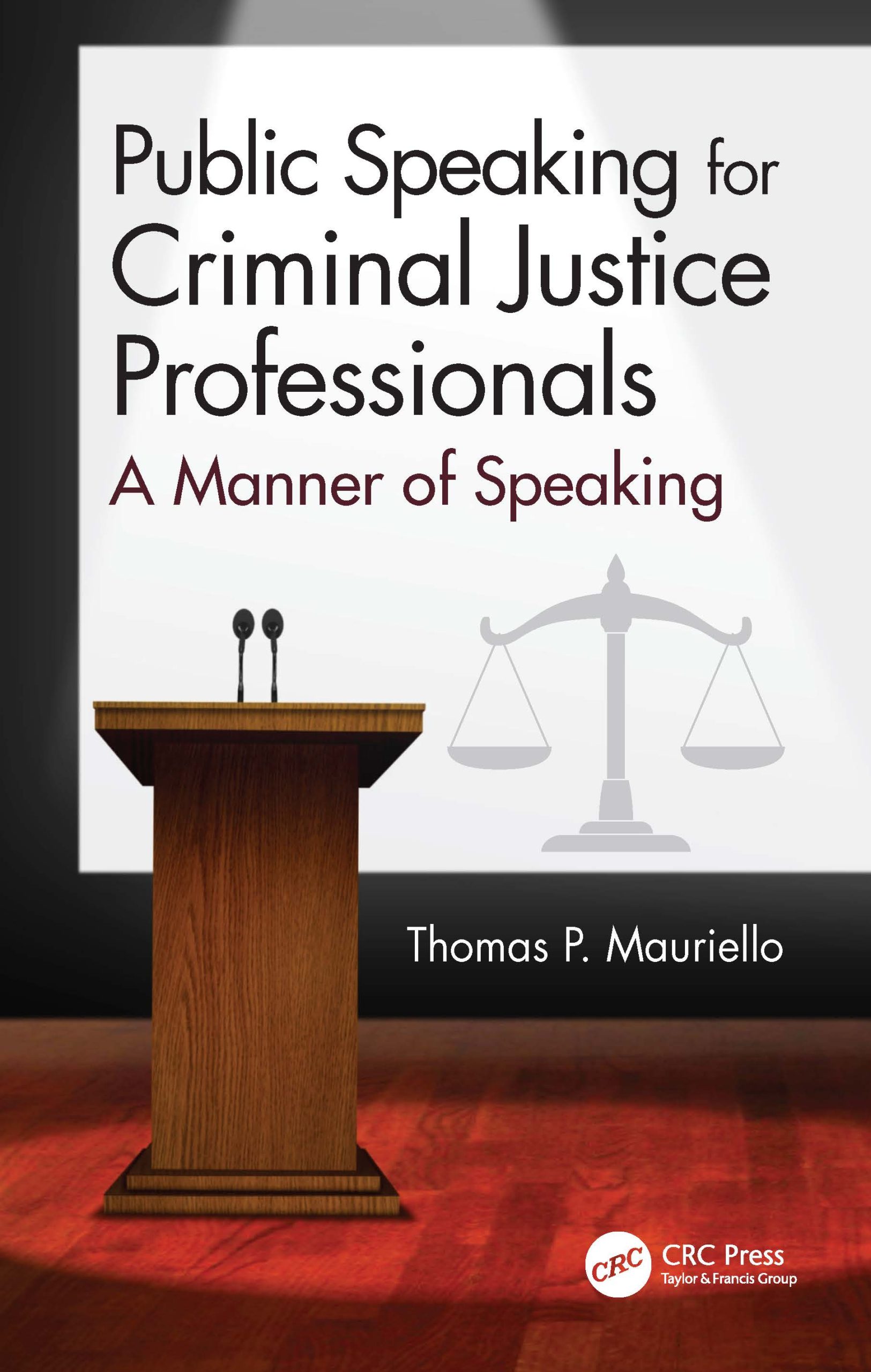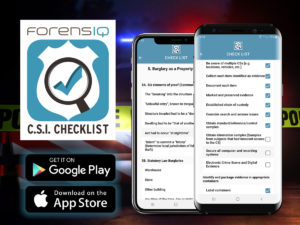Forensic Identification Technique Called into Question
A recent study conducted at North Carolina State University has shown that using the shape of someone’s skull to make a positive ID may not be as reliable as investigators have previously thought. Dr. Ann Ross of NC State University explained that victims do not always have elaborate enough dental records for comparison, so then investigators would turn to the skull shape. The study found that most of the population has a “cranial vault” shape too similar to one another to depend upon this method of identification. In the experiment, researchers asked 106 members of the Academy of Forensic sciences to identify 5 skulls. Less than half of the participants were able to accurately make the ID.
To read more, click here.
Source: forensicmag.com
Citation:
Shipman, M. Forensic Magazine. Questions Raised About Longstanding Forensic Identification Technique. Retrieved December 11, 2013 from http://www.forensicmag.com/news/2013/12/questions-raised-about-longstanding-forensic-identification-technique#.UqjZiWRDs3M
[Abstract written by Alex Mitzel, ForensIQ Intern]
New Efforts to Reduce Wrongful Convictions
Recently, the International Association of Police Chiefs, along with the Justice Department and the Innocence Project, met to develop guidelines for case investigations and review of innocence claims in order to cut down on wrongful convictions. They are developing many different efforts to achieve this goal. One hope is to adopt a tool that will identify “high-risk” cases for wrongful conviction. Additionally, they are setting standards for eyewitness identification since it has been proven that present tactics yield a high percentage of misidentifications. They are also working to ensure that agencies become more responsive to those who protest their conviction claiming innocence. Policies such as these have already been adopted in cities such as Baltimore and Dallas.
To read more on the subject, view the article here.
Source: forensicmag.com
Citation:
Hsu, S. (December 2, 2013). Police chiefs lead effort to prevent wrongful convictions by altering investigative practices. The Washington Post. Retrieved from http://www.washingtonpost.com/local/crime/police-chiefs-urge-changes-to-photo-lineups-other-tools-to-prevent-wrongful-convictions/2013/12/02/5d8e9af2-5b69-11e3-bf7e-f567ee61ae21_story.html
[Abstract written by Alex Mitzel, ForensIQ Intern]
Face-Reading Technology
Face-reading software is becoming more and more popular nowadays for many different reasons. Companies such as Affectiva and Emotient have developed technology that can read fleeting facial expressions and register the emotion. This software was developed over a 2.5 year period while studying 1.5 billion facially delivered emotions from individuals via webcam who consented to the study. Affectiva places heavy emphasis on getting consent before usage of the software so as not to rattle privacy concerns. Scientists and companies alike see this type of software leading future advances in different fields including police investigations, education, gaming, advertising, and medicine. It even introduces promise to aid autistic children in picking up facial clues.
Take a look at this fascinating article here!
Source: forensicmag.com
Citation:
Eisenberg, A. (November 30, 2013). When Algorithms Grow Accustomed to Your Face. The New York Times. Retrieved from http://www.nytimes.com/2013/12/01/technology/when-algorithms-grow-accustomed-to-your-face.html?_r=0
[Abstract written by Alex Mitzel, ForensIQ Intern]
Be Careful Around The Holidays!
While trying to be a part of the holiday spirit, or at least the “great shopping time” spirit, a word of advice is that one needs to be careful when shopping online around the holidays. Why? Because hackers have the ability to steal your information off of your banking websites. In an article from ABC News, Ira Victor, Director of Digital Forensics Practice at Data Clone Labs says “the cyber criminals can essentially drain your savings account without you even knowing it, or alerting the bank.” But what can we do? Isn’t cyber Monday one of the busiest shopping days online of the year? Ira’s solution is to do all your banking over the phone, or even in person if it is possible to avoid cybercrime and hacking.
For the full article, click here!
Citation
Boatman, S. (2013, December 2). Hackers targeting online banking on cyber monday. Retrieved from News4.com website: http://www.mynews4.com/news/local/story/Hackers-Targeting-Online-Banking-On-Cyber-Monday/gTBXsLq4VESmHgx3GfI- Eg.cspx
[Abstract written by Karl “Kip” Zenowich, ForensIQ Intern]
The Death Scene Checklist
When investigating a death scene, there are many things to do and many goals to achieve. Having no structure to your investigation is not a successful way of going through the process of checking a scene out. As author Dick Warrington states in his article on forensicmag.com, an investigator must have a checklist. “Good investigators can keep lots of details in their heads. Great investigators document the details.” Another statement in the article, most cases go to a jury trial. In order to do a good job, and specifically, to remember what happened in the case, a checklist goes a long way. Warrington goes through why a checklist may help whether it is in a complex crime scene or just a simple one where a jury trial will make all the difference. An interesting read for someone who is interested in learning more about the correct way to do investigating. Along with the information provided above, there are links that lead to webinars from Warrington on how to use death scene checklists.
For the full article, click here!
Warrington, D. (2013, October 22). Crime scene documentation: The death scene checklist. Forensic Magazine.
[Abstract written by Karl “Kip” Zenowich, ForensIQ Intern]
A New Cybercrime Lab
In an article from the Canberra Times out of Australia, the Australian Federal Police are receiving a new cyber forensics building that will be used to fight cybercrime. After an attack on the Police’s website, construction began on a $106 million dollar crime lab. The lab is being built with the specific purpose of detecting and fighting back against cybercrime. The lab will also hold facilities for “crime scene analysis, as well as firearms, fingerprints, criminalistics and identification sciences.” With a strong fight on cybercrime, this lab will be the beginning of a new age in cyber-forensics.
For the full article, click here!
Anderson, S. (2013, November 22). New forensics lab will help police take the fight to cyber
criminals. The Canberra Times.
[Abstract written by Karl “Kip” Zenowich, ForensIQ Intern]
Advances for Blood Stain Analysis
A recent major breakthrough has been noted in the realm of blood analysis. Researchers at Teesside University have developed a blood detecting camera prototype. The device is designed to detect trace amounts of haemoglobin at crime scenes. Not only that, but the camera has been proven to aid with a swift and accurate time of death estimation, especially with fresh blood samples. This device will revolutionize the formerly time-consuming, inefficient techniques of blood analysis at crime scenes. Researchers are hopeful that, in the future, this breakthrough can develop into a method that can be used for other crime scene liquids as well.
To find out more, click here.
Source: forensicmag.com
Citation:
The Independent. The blood detectives: Scientific breakthrough in reading stains may help solve crimes. Retrieved November 13, 2013 from http://www.independent.co.uk/news/science/the-blood-detectives-scientific-breakthrough-in-reading-stains-may-help-solve-crimes-8906451.html
[Abstract written by Alex Mitzel, ForensIQ Intern]
The Omnivore Field Kit
It’s hard to get video evidence in today’s world. Only a few years ago, videotape evidence was used in many cases throughout the world. Now we have moved into the age of the Digital Video Recorder (DVR). In an article from policeone.com, an article from police and security news’ website goes through a few disadvantages to having the new DVR system as a system that gathers video recordings and then provides a solution. An example of a shortcoming is that some media storage devices’ connection ports that are being used to collect video evidence might be incompatible with other devices. The article states that sometimes these connection ports are broken or just the wrong type altogether. A solution from Ocean Systems is the Omnivore Field Kit. The kit is capable of connecting to any type of video device and capable of storing many uncompressed files of video evidence. In a very slim and portable case, the Omnivore Field Kit is available to make investigations with video evidence progress much smoother.
Read the full article here!
Ocean systems releases video acquisition field kit. (2013, October 2). Retrieved from Policeone.com website: http://www.policeone.com/police-products/investigation/computer-forensics/articles/6491797-Ocean-Systems-releases-video-acquisition-field-kit/
[Abstract written by Karl “Kip” Zenowich, ForensIQ Intern]
Digital Evidence Warrants
When executing a warrant for digital evidence, author John J. Barbara states in his article from forensicmag.com, one must execute the warrant within 10 days. However, he states, most investigators “have interpreted this to also mean that the forensic analysis of the digital devices must be completed within ten days after they are seized.” Barbara goes further to explain that there is no guideline that states one must do so. Barbara then talks about how many warrants are actually needed to go through computer evidence. This article is an interesting read for anyone learning about the legal side of obtaining search warrants and executing them.
For the full article, click here!
Citation
Barbara, J. J. (2013, October 29). Executing a warrant for digital evidence. Retrieved from Forensic Magazine website: http://www.forensicmag.com/articles/2013/10/executing-warrant-digital-evidence#.UoTcYBpJOAg
[Abstract written by Karl “Kip” Zenowich, ForensIQ Intern]
Computer Forensics, Taking Over
In this article, author Brian Wallace shows how computer forensics has begun to have a major effect on forensics as a whole. He goes over which crimes have had great benefit from computer forensics in the past, notable cases include the BTK killer and Scott Peterson. Provided in the article is a great diagram that gives examples from cases in the past that have been very notable. The diagram itself is an interesting read, along with the summary of it provided by Wallace.
Read the full article here!
Citation
Wallace, B. (2013, October 11). The power of computer forensics. Retrieved from Business 2 Community website: http://www.business2community.com/infographics/power-computer-forensics-infographic-0644262
[Abstract written by Karl “Kip” Zenowich, Forensiq Intern]
Crime Predicting Computer Software
Recently, the company PublicEngines released computer software called CommandCentral Predictive that is designed to better detect local crime hot spots for police agencies. The program provides street-based officers with daily reports identifying likely high-crime areas in which to target. CommandCentral Predictive is intended to be an easy program to navigate – no technical expertise is needed; officers and crime analysts alike can use it. The purpose is to take the pressure off of crime analysts so that they no longer need to discuss tactical directions with each and every officer. This tool can substitute their oversight, allowing for analysis in more stringent areas. By using CommandCentral Predictive, law enforcement organizations can more effectively allocate their resources.
To read more about this product, click here.
Source: forensicmag.com
Citation:
Forensic Magazine. Crime Prediction Tool. Retrieved October 17, 2013 from http://www.forensicmag.com/product-releases/2013/08/crime-prediction-tool#.Ul9s02TBK6O
[Abstract written by Alex Mitzel, ForensIQ Intern]
Internet Evidence Collection Methodology
“Collection, Preservation, and Presentation”: these are the significant factors identified by Todd Shipley, a highly experienced law enforcement investigator, in his article on internet evidence collection. Defensibility of the evidence in court will depend on the “defined, repeatable, and verifiable” approach investigators take when engaging the evidence. He begins by classifying “internet forensics” and isolating its aspects that prove somewhat problematic for investigators. The tools most often used by investigators for internet evidence collection are not designed for law enforcement and, therefore, do not retain much integrity in court. Shipley cites different sources of expertise including a landmark court case and a previously proposed methodology to come to his conclusion – collection must be verifiable, preservation must be in the original state, and presentation must simulate collection techniques.
For more details on this subject, click here.
Source: forensicmag.com
Citation:
Shipley, T. Collection of Evidence From the Internet: Part 1. In DFI News. Retrieved October 17, 2013, from http://www.dfinews.com/articles/2009/12/collection-evidence-internet-part-1#.Ul9iUmTBK6M.
[Abstract written by Alex Mitzel, ForensIQ Intern]
New Methodology to Determine Height of Blood Spatter Sources
A professor and student at Washington State University developed a formula to determine the height of a source of blood spatter. Prior to this discovery, contrary to its portrayal in the media, forensic science was never able to do this based off of a single droplet because the previously accepted investigative method yielded more than one possible height. Using trigonometry, Fred Gittes and Chris Varney discovered that the height actually can be determined by using not one, but several blood droplets. Their theory proved valuable through successful lab experiments. They are even able to apply their formula to solve other historical height mysteries.
Click here to check out their discovery!
Source: MIT Technology Review
Citation:
Emerging Technology From the arXiv. (March 1, 2011). Blood Spatter Breakthrough For Forensic Scientists. In MIT Technology Review. Retrieved October 9, 2013, from http://www.technologyreview.com/view/423166/blood-spatter-breakthrough
[Abstract written by Alex Mitzel, ForensIQ Intern]
Crime Scene? There’s an App For That!
Currently, the Forensic Institute for Research and Education is seeking active duty law enforcement officers to be the beta testers for a newly developed app for processing crime scenes. The app, available to iPhone and Android users, is called the Checklist App for Scene Investigation (CASE). Its purpose is to provide a more effective way for first responding officers to document a crime scene. The Terms of Use for the app state that the app is not intended to replace any crime scene protocol, but rather, it is intended to enhance the processing ability. The beta testing requires 30 day use of the app beginning in October.
If you are an interested officer, know an interested officer, want to know more information, or are ready to register to be a beta tester for this app, please visit the website here!
Citation:
FIRE is Seeking Beta Testers for Checklist App for Scene Examination (CASE). In Middle Tennessee State University. Retrieved September 26, 2013, from http://www.mtsu.edu/fire/app%20beta%20test.php.
[Abstract written by Alex Mitzel, ForensIQ Update Reporter]
A Second Chance, After the Death Penalty
A man put to death by the death penalty in Texas is having his case re-looked at. Cameron Todd Willingham was executed for the deaths of his three daughters in a fire in 1991. A phony testimony has come to light and now, investigators are checking out the case one more time. Not only was the testimony used against Willingham false, but the arson investigation that went on during the case was found to have “erroneous forensic analysis” which was “ the basis for Willingham’s conviction,” says author Bob Ray Sanders in his article on the “Star-Telegram” website. There is a call from the Innocence Project to reinvestigate the case.
For the whole article, click here!
Citation
Sanders, B. R. (2013, October 1). Further investigation needed in case of executed man.
Star-Telegram. [Abstract written by Karl "Kip" Zenowich, Forensiq Intern]






